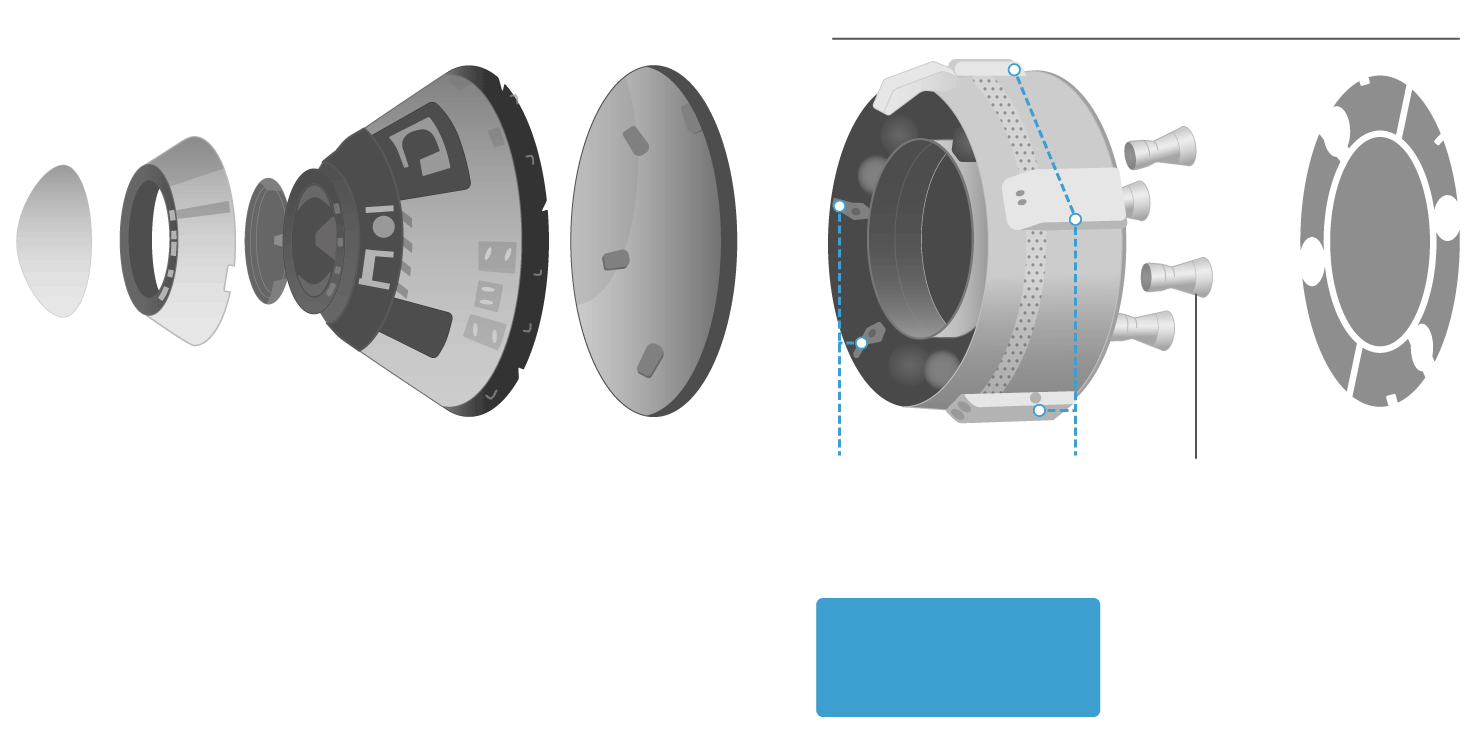Boeing Starliner undocks from International Space Station, heads back to Earth
After a summer of turmoil, Boeing’s Starliner spacecraft is finally home.
The capsule undocked from the International Space Station without astronauts onboard on Friday at 6:04 p.m. ET, then spent roughly six hours flying back to Earth. Starliner successfully touched down at New Mexico’s White Sands Space Harbor at 12:01 a.m. ET.
NASA footage showed the capsule streaking across the night sky before two sets of parachutes opened to slow it down. Six landing airbags were also deployed underneath the spacecraft to cushion its landing.
For Boeing, the Starliner's successful return was likely bittersweet. Its smooth journey back suggests that the two NASA astronauts it carried to the space station could probably have flown home safely on the spacecraft. But problems with Starliner's thrusters and leaking helium, both detected soon after it launched, led the agency’s top officials to decide to call on SpaceX for the return flight instead.
“It’s important to remember this was a test mission,” Joel Montalbano, NASA’s deputy associate administrator for space operations, said at a news conference early Saturday after Starliner had landed.
Starliner launched NASA astronauts Butch Wilmore and Suni Williams to space in early June on the capsule’s first crewed test flight — a mission expected to last around eight days. But the Starliner then remained parked at the space station for months as engineers on the ground assessed how to safely bring it back to Earth.
After weeks of tests and analysis, NASA determined that the capsule’s propulsion system appeared stable, but the thruster issues posed too much of a risk for Starliner to return with a crew. Wilmore and Williams will remain on the space station into the new year then fly back in February on a SpaceX capsule.
The two astronauts were on hand to help with Starliner’s departure, which took place as the space station was flying 260 miles over central China.
“We have your backs, and you’ve got this,” Williams radioed to mission controllers at NASA’s Johnson Space Center in Houston. “Bring her back to Earth. Good luck.”
The return journey was closely watched, as it marked the end of a dramatic few months for Boeing and NASA. The test flight was meant to demonstrate that the spacecraft could reliably ferry astronauts to and from low-Earth orbit, thereby paving the way for NASA to certify Boeing to conduct regular trips to the space station.
Instead, the thruster issues became the latest major setback for Boeing’s Starliner program, which even before the launch was more than $1.5 billion over budget and years behind schedule. An uncrewed test flight to the space station, which NASA required of Boeing before its spacecraft could carry astronauts, also went awry the first time, and the company had to repeat it in 2022.
Boeing’s Starliner spacecraft
Five of Starliner’s reaction control system thrusters — which are used to move the capsule around in orbit — malfunctioned as it was approaching the International Space Station. Helium has also been leaking in the spacecraft’s propulsion system.

spacecraft’s service module
Ascent cover
Forward heat shield
Reusable crew module
Base heat shield
Launch abort engines
Solar array
Reaction control system thrusters, orbital maneuvering and altitude control thrusters
The malfunctioning thrusters and helium leaks are here.
NASA officials said earlier this week that the agency is working with Boeing on modifications to Starliner’s thrusters. Additional analysis will be carried out once the vehicle is back and engineers have had a chance to evaluate how it performed.
“We’re talking to the Boeing team already about next steps,” Steve Stich, manager of NASA’s Commercial Crew Program, said at the news conference.
To account for potential thruster malfunctions as Starliner began its trip home, flight controllers modified the capsule’s normal undocking process. After detaching from the space station, Starliner autonomously flew up and away from the station to protect it in case something went wrong.
Then at 11:17 p.m. ET, Starliner’s engines fired a 59-second “de-orbit burn” to slow the spacecraft and send it plummeting through Earth’s atmosphere.
From there, it was mostly smooth sailing, though there were a few “hiccups” during reentry, according to Stich. A navigation system “kind of failed off temporarily and that system was brought back on, and it was tracking just fine,” he said.
Even so, he added, "the Starliner performance in executing the entry phase has been just about flawless."
Boeing developed its Starliner spacecraft under NASA’s Commercial Crew Program, an initiative launched in 2011 to support privately built space vehicles in order to fill the gap left by NASA’s retired space shuttles. Rival company SpaceX developed its Crew Dragon spacecraft as part of the same program and has been conducting routine flights to and from the space station since 2020.
1 Nasa Starliner Return
2 Jordan Love Injury
3 Taylor Fritz
4 Russia-Ukraine War
5 DirecTV Disney Dispute
6 Linkin Park
7 Sergio Mendes
8 Taylor Swift
9 Beetlejuice Beetlejuice
10 WNBA

.jpg)

.jfif)


.jfif)




Your Answaer :